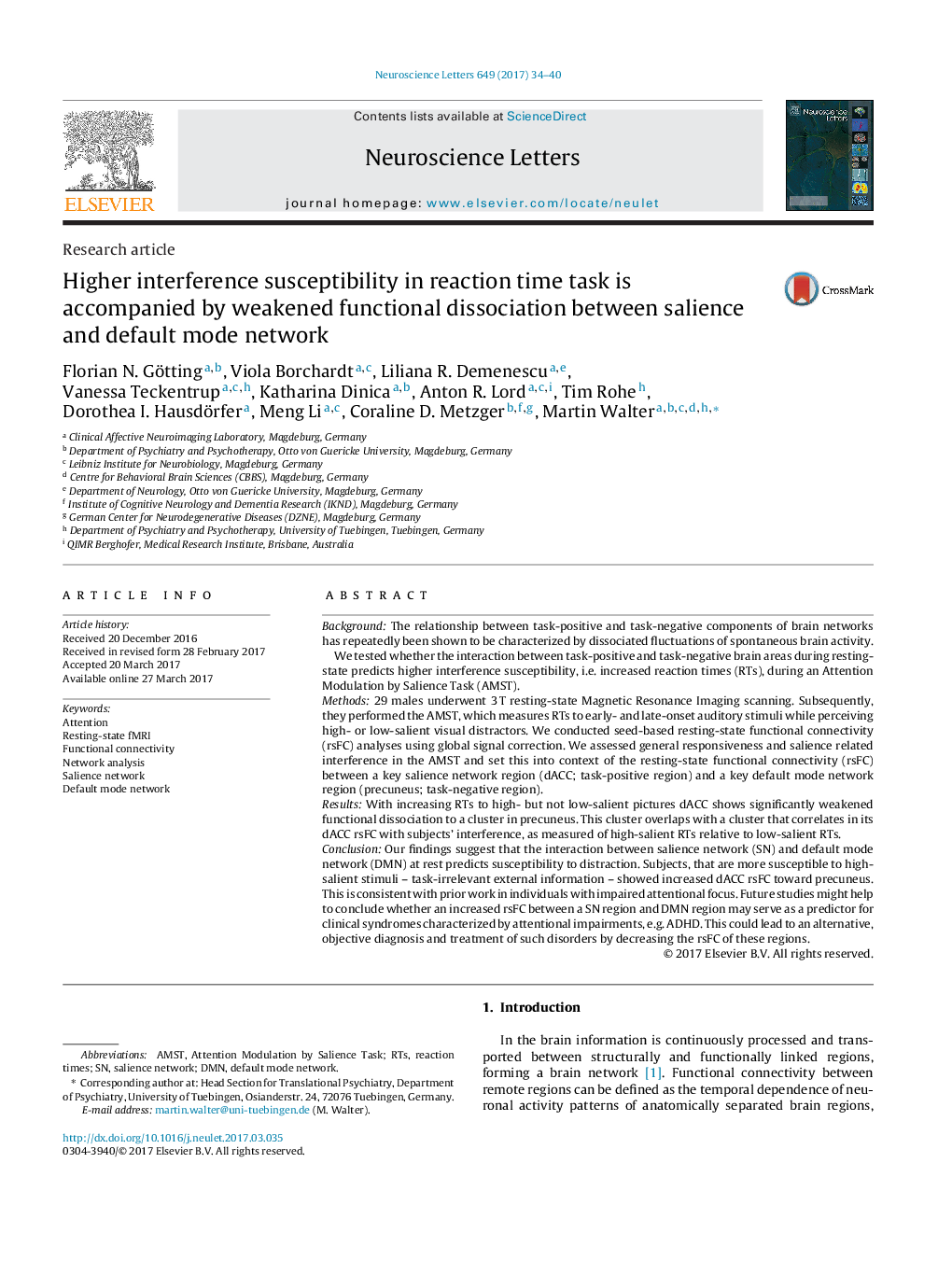| Article ID | Journal | Published Year | Pages | File Type |
|---|---|---|---|---|
| 5738404 | Neuroscience Letters | 2017 | 7 Pages |
BackgroundThe relationship between task-positive and task-negative components of brain networks has repeatedly been shown to be characterized by dissociated fluctuations of spontaneous brain activity.We tested whether the interaction between task-positive and task-negative brain areas during resting-state predicts higher interference susceptibility, i.e. increased reaction times (RTs), during an Attention Modulation by Salience Task (AMST).Methods29 males underwent 3Â T resting-state Magnetic Resonance Imaging scanning. Subsequently, they performed the AMST, which measures RTs to early- and late-onset auditory stimuli while perceiving high- or low-salient visual distractors. We conducted seed-based resting-state functional connectivity (rsFC) analyses using global signal correction. We assessed general responsiveness and salience related interference in the AMST and set this into context of the resting-state functional connectivity (rsFC) between a key salience network region (dACC; task-positive region) and a key default mode network region (precuneus; task-negative region).ResultsWith increasing RTs to high- but not low-salient pictures dACC shows significantly weakened functional dissociation to a cluster in precuneus. This cluster overlaps with a cluster that correlates in its dACC rsFC with subjects' interference, as measured of high-salient RTs relative to low-salient RTs.ConclusionOur findings suggest that the interaction between salience network (SN) and default mode network (DMN) at rest predicts susceptibility to distraction. Subjects, that are more susceptible to high-salient stimuli - task-irrelevant external information - showed increased dACC rsFC toward precuneus. This is consistent with prior work in individuals with impaired attentional focus. Future studies might help to conclude whether an increased rsFC between a SN region and DMN region may serve as a predictor for clinical syndromes characterized by attentional impairments, e.g. ADHD. This could lead to an alternative, objective diagnosis and treatment of such disorders by decreasing the rsFC of these regions.
